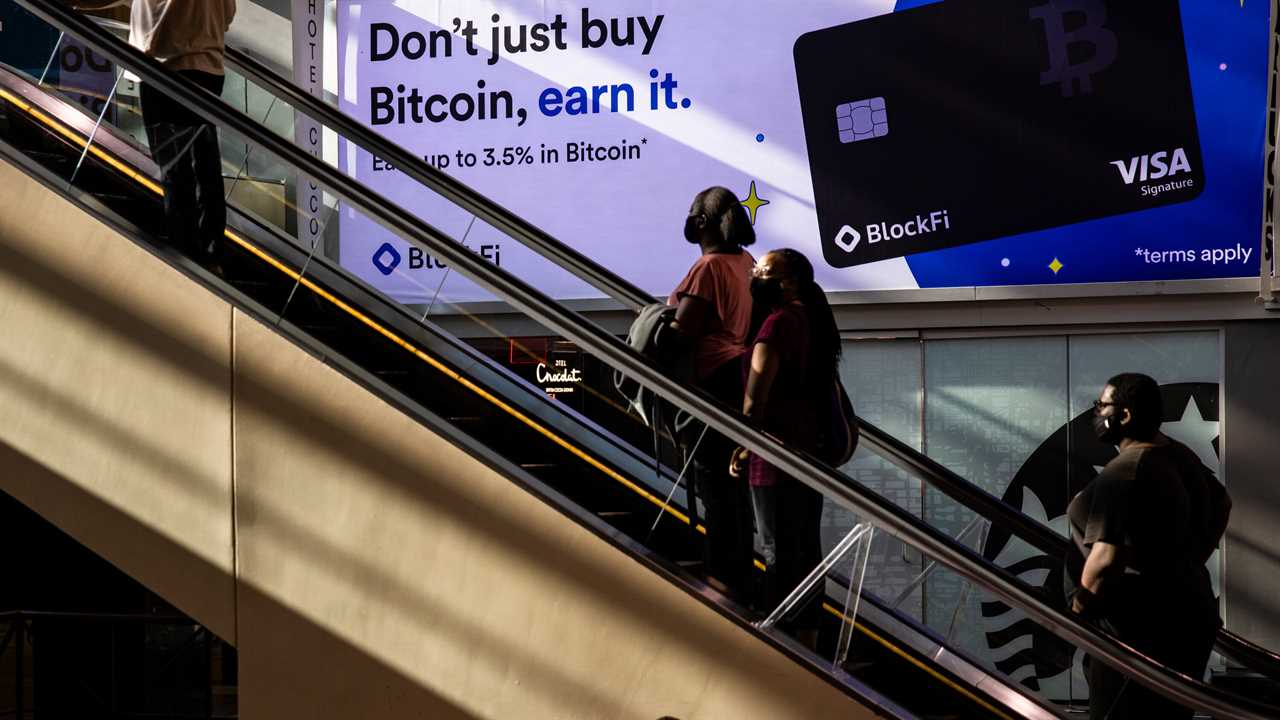
The development of Bitcoin and thousands of other cryptocurrencies in a little over a decade has changed the definition of money — and spawned a parallel universe of alternative financial services, allowing crypto businesses to move into traditional banking territory.Here’s what is happening in the fast-growing crypto finance industry, a sector that has officials in Washington sounding alarm bells.What alternative banking services do crypto businesses offer?
Most notably, lending and borrowing. Investors can earn interest on their holdings of digital currencies — often a lot more than they could on cash deposits in a bank — or borrow with crypto as collateral to back a loan. Crypto loans generally involve no credit checks as transactions are backed by digital assets.Who’s in this sector?
The market is quickly being flooded with businesses from the vaguely familiar to science-fiction-like entities. They run the gamut from BlockFi, which offers interest-bearing accounts like a bank and has state lender licenses, and Kraken Bank, which was granted a Wyoming bank charter and hopes to soon take retail deposits, to markets controlled by computer code and devised to be governed by users through a token distribution structure. Compound, a decentralized, automated lending and borrowing system began in 2018 and now has more than $18 billion in assets earning interest.How do crypto offerings differ from bank services?
Superficially, some look similar. Take the BlockFi interest account, where consumers deposit cash or crypto and earn monthly interest, as if at a bank. But one big difference is the interest rate — depositors can earn a yield more than 100 times higher on BlockFi than on average bank accounts.Those rewards come with risks. Deposits are not guaranteed by the Federal Deposit Insurance Corporation. “Cyberattacks, extreme market conditions, or other operational or technical difficulties” could lead to a temporary or permanent halt on withdrawals or transfers, the company cautions in fine print. Some regulators and lawmakers worry that those warnings are not prominent enough and that consumers need stronger protections.Why such high yields?
Traditional banks lend out their customers’ deposits and pay clients a slice of the earnings as interest. Crypto outfits take a similar approach: They pool deposits to offer loans and give interest to depositors. But by law, banks are required to have reserves to ensure that even if some loans go bad, customers can still withdraw funds, whereas cryptobanks do not have the same reserve requirements and the institutions they lend to can take risky bets.BlockFi, for example, lends to hedge funds and other institutional investors who exploit flaws in crypto markets to make fast money without actually holding risky assets, betting on discrepancies between actual crypto values and crypto futures. When successful, their speculation generates returns that help fuel the higher, riskier consumer yields.What is a stablecoin?
Crypto is very volatile, making it less practical for transactions like payments or loans. That’s where stablecoins come in. They are cryptocurrencies pegged to stable assets, commonly the dollar. They are meant to provide the steady value of government-issued money in digital form for blockchain transactions, but they are issued by private entities. Popular dollar-tied tokens include Tether and U.S.D. Coin. The number of stablecoins in circulation globally has jumped from $29 billion in January to $117 billion as of early September, according to The Block, a publication dedicated to cryptocurrency.To keep the value of government-issued money stable, central bankers manage supply and demand and ensure that there are ample reserves. Stablecoin issuers are supposed to similarly hold and monitor reserves. But there is no guarantee they actually hold the one-to-one dollar backing they claim. Some authorities fear a sudden surge in withdrawals could lead to a collapse in one of those assets, putting consumers, financial companies and possibly the broader economy at risk. Others suggest a central bank digital currency would render stablecoins irrelevant.What is a central bank digital currency?
Central bankers are examining the potential for issuance of a government-issued cryptocurrency. That would theoretically offer the convenience of crypto with the reliability of money controlled by a central bank. Many countries, including the United States, are considering developing a central bank digital currency. Because a stablecoin aims to do in digital form what government money does — provide a stable value — a U.S. digital dollar could undermine the private money minters of the cryptosphere.“You wouldn’t need stablecoins,By: Ephrat Livni and Eric Lipton
Title: Crypto Banking and Decentralized Finance, Explained
Sourced From: www.nytimes.com/2021/09/05/us/politics/cryptocurrency-explainer.html
Published Date: Sun, 05 Sep 2021 07:00:04 +0000
Read More
Did you miss our previous article...
https://badpoliticians.com/us-politics/two-top-fda-two-top-fda-regulators-are-set-to-leave-during-a-critical-period
 UK PoliticsWorld PoliticsVideosPrivacy PolicyTerms And Conditions
UK PoliticsWorld PoliticsVideosPrivacy PolicyTerms And Conditions
